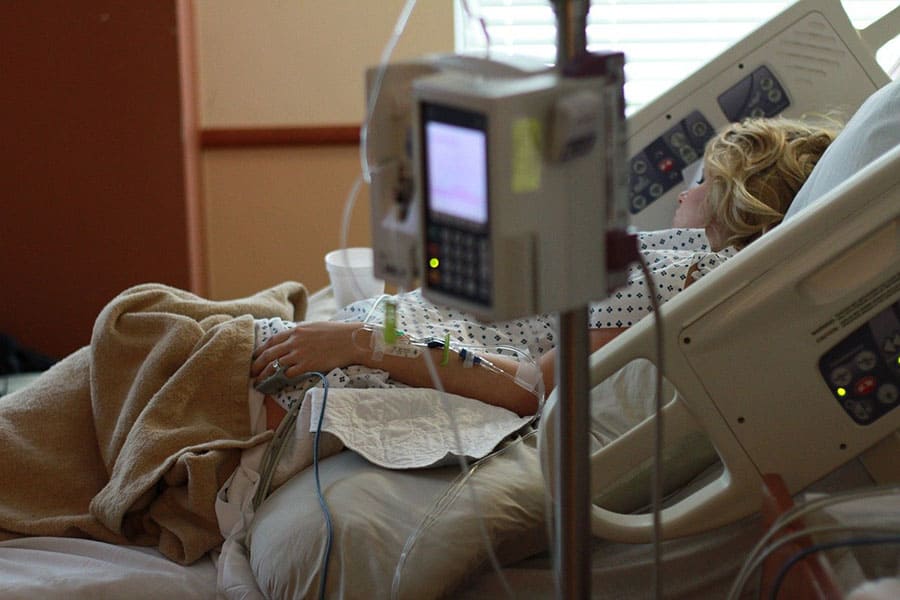NHS publishes new guidance to help hospitals safely discharge patients as services start up again
Following the new £588 million fund, provided by the UK Government, to facilitate speedy hospital discharges by giving people timely access to care in their own homes or to cover immediate care costs, the NHS has published guidance to help hospitals safely discharge patients into the appropriate setting.
Entitled ‘Hospital Discharge Service: Policy and Operating Model’, the document sets out the Hospital Discharge Service operating model for all NHS trusts, community interest companies, and private care providers of NHS-commissioned acute, community beds, community health services and social care staff in England.
It replaces the Hospital Discharge Service Requirements initially set out in March 2020 at the peak of the COVID-19 crisis in the UK. The March requirements stated that patients who no longer needed a hospital bed were to be discharged to their home as quickly as possible in order to meet the unprecedented demand for hospital beds due to the pandemic.
Now, the new ‘Hospital Discharge Service: Policy Operating Model’ guidelines instead focus on discharging patients from hospitals into the appropriate setting, considering what care they might need after being discharged from hospital, whether that is care at home or going into a care home, for instance.
The new £588 million fund from the UK Government supports the new hospital discharge operating model by helping cover the cost of post-discharge recovery and support services, rehabilitation and reablement care for up to six weeks following discharge from hospital.
Additionally, from 1 September 2020, the government has decided that social care needs assessments and NHS Continuing Healthcare (CHC) assessments of eligibility will recommence.
NHS CHC is a package of care for adults that is arranged and funded solely by the NHS. In order to receive NHS CHC funding, individuals have to be assessed by Clinical Commissioning Groups (CCGs) according to a legally prescribed decision-making process to determine whether the individual has a ‘primary health need’.
However, due to the coronavirus crisis, NHS CHC was temporarily suspended between 19 March and 31 August 2020, with the NHS instead focusing on treating patients with COVID-19, preventing the spread of the virus and meeting the unprecedented demand.
Now, as levels of coronavirus continue to decrease in the community and the NHS has entered phase three of its COVID-19 response, NHS CHC will restart from 1 September 2020 alongside the new hospital discharge guidelines.
As outlined in the guidelines, the new ‘discharge to assess’ model established by the NHS is based on four clear pathways:
- Pathway 0: 50 percent of people – simple discharge, no formal input from health or social care needed once home.
- Pathway 1: 45 percent of people – support to recover at home; able to return home with support from health and/or social care.
- Pathway 2: four percent of people – rehabilitation or short-term care in a 24-hour bed-based setting.
- Pathway 3: one percent of people – require ongoing 24-hour nursing care, often in a bedded setting. Long-term care is likely to be required for these individuals.
For patients, this new model means that they should receive high-quality care from acute and community hospitals, and will be clearly informed about their care plans post-discharge, if required.
In the new operating model document, the NHS states: “Hospital staff will make clear that discharge will be organised as soon as clinically appropriate and people will not be able to stay in a bed after the point where this is clinically necessary. For 95% of people leaving hospital this will mean that (where it is needed), the assessment and organising of ongoing care will take place when they are in their own home.”
For providers of community health services, the new guidelines state that they should work closely with other system partners to facilitate timely discharge of people, particularly for pathways 1, 2 and 3. This includes:
- ensuring provision of equipment to support discharge
- delivering enhanced occupational therapy and physiotherapy seven days a week to reduce the length of time a person needs to remain in a hospital or care home rehabilitation bed
- supporting the local authority to ensure that quality of provision is adequate and safe
In addition, the new guidelines underline that care packages for those discharged should be jointly commissioned and the local authority should be the lead commissioner, unless otherwise agreed between the CCG and the local authority.
https://thiis.co.uk/nhs-publishes-new-guidance-to-help-hospitals-safely-discharge-patients-as-services-start-up-again/https://thiis.co.uk/wp-content/uploads/2020/08/hospital-bed.jpghttps://thiis.co.uk/wp-content/uploads/2020/08/hospital-bed-150x150.jpgNewsroomNHSSector Newshospital discharge operating model,hospital discharge service,hospital discharge service requirements,NHS,NHS CHC,NHS Continuing Healthcare,NHS guidanceFollowing the new £588 million fund, provided by the UK Government, to facilitate speedy hospital discharges by giving people timely access to care in their own homes or to cover immediate care costs, the NHS has published guidance to help hospitals safely discharge patients into the appropriate setting. Entitled ‘Hospital...Sarah SarsbySarah Sarsbysarah@thiis.co.ukEditorTHIIS Magazine


